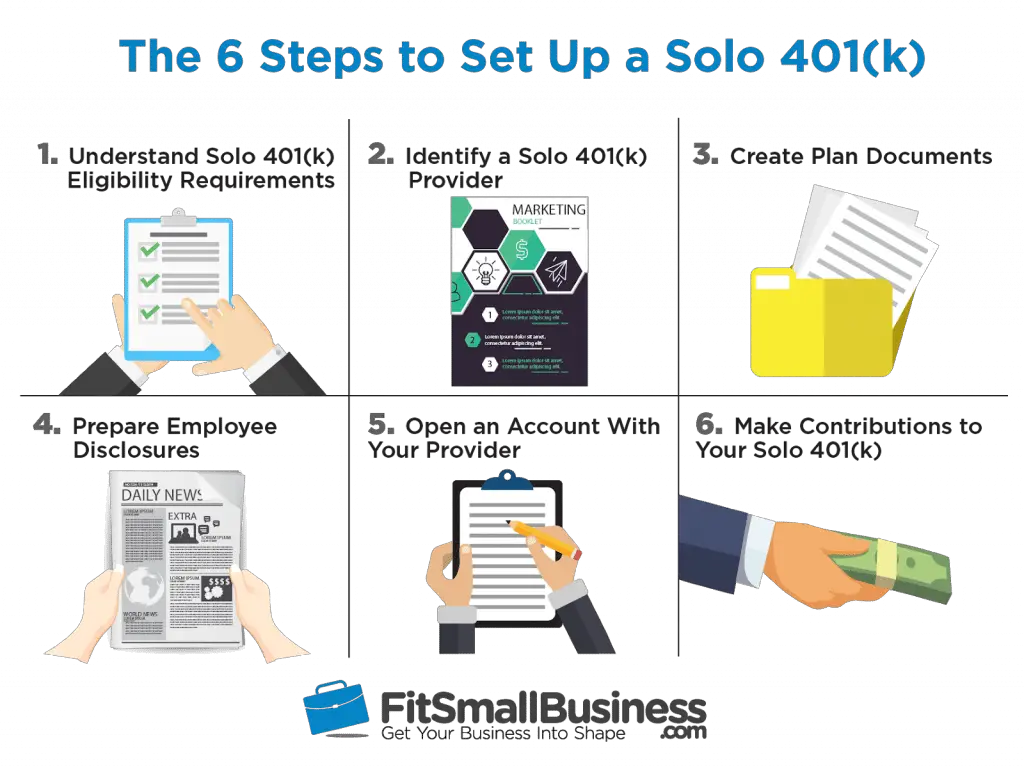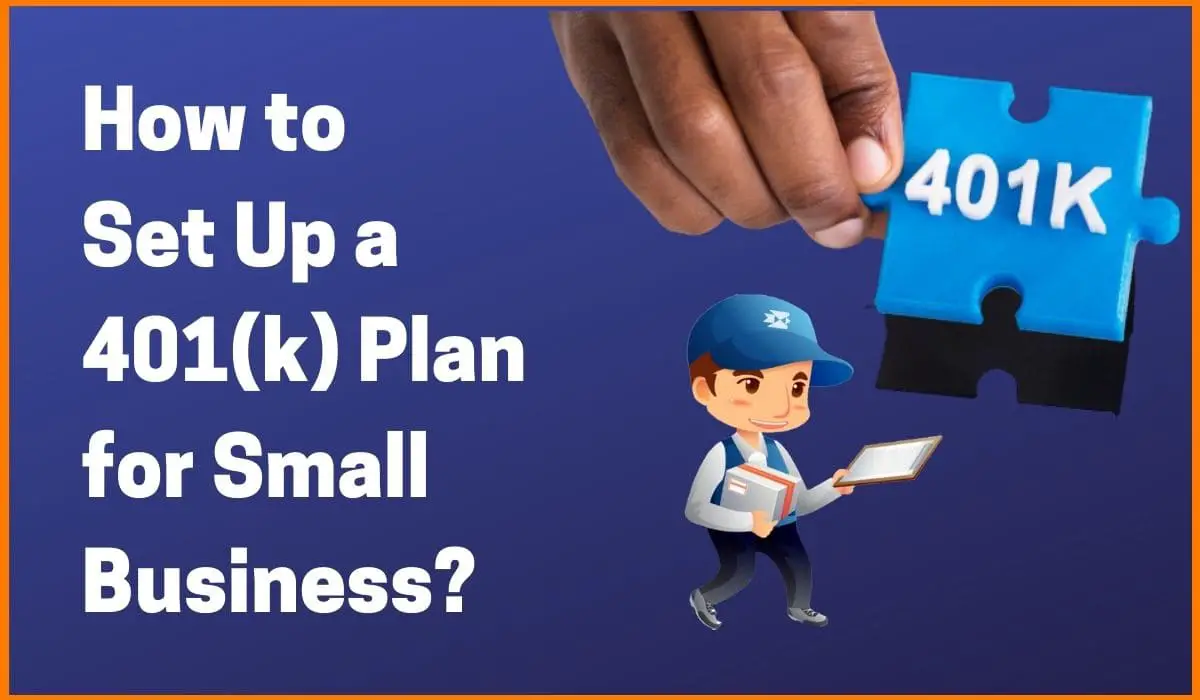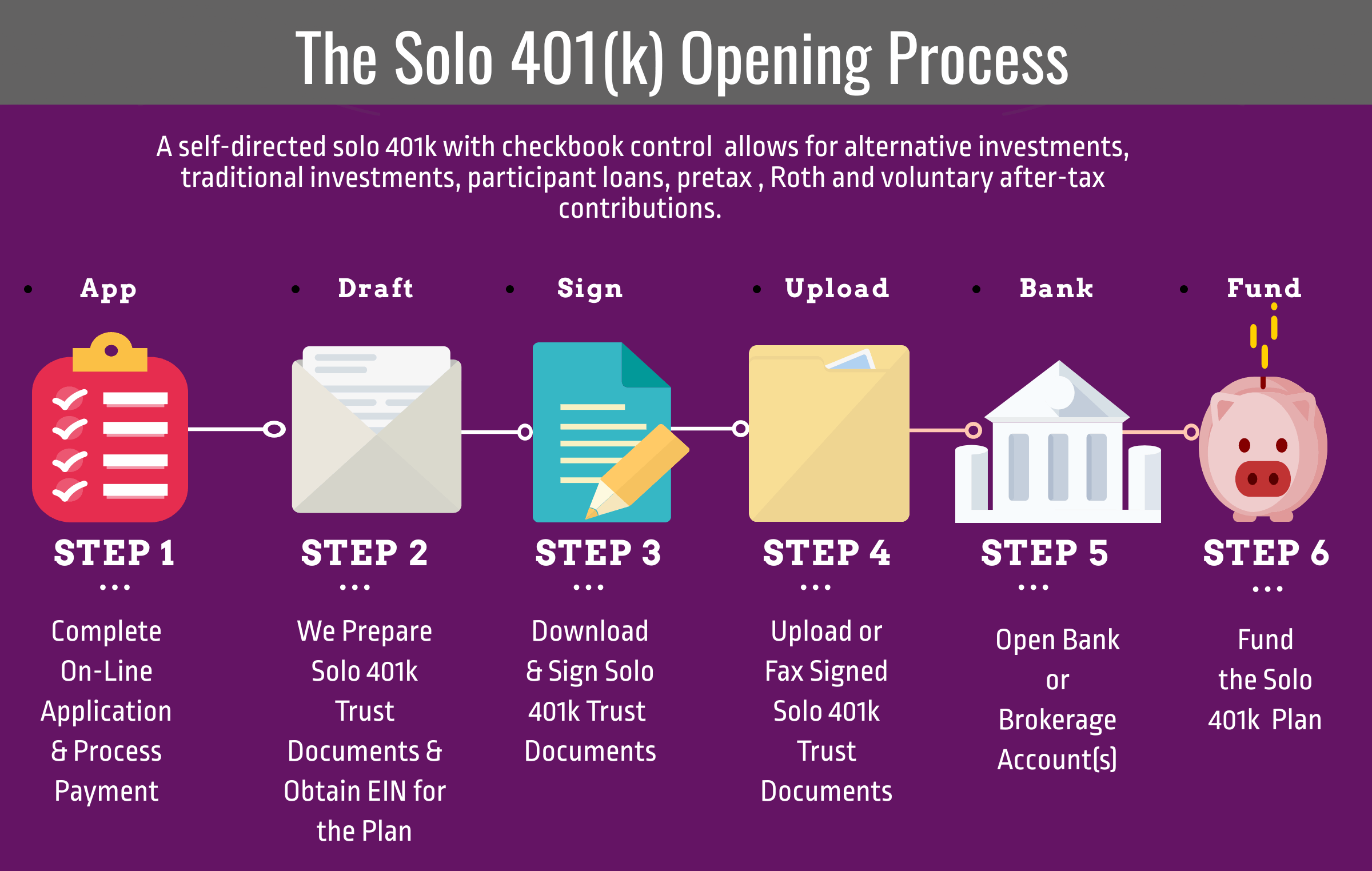Think About Switching Jobs
You may be willing to do without benefits when you start working if your goal is to gain experience, or because you really believe in a company. Some startups may not have retirement plans in the first few years, but they plan to offer them later. But you may want to think about switching jobs to a more established company to make the most out of your savings if you’ve been there for years with no change in benefits.
Contribution Limit As An Employer
Wearing the employer hat, you can contribute up to 25% of your compensation.
The total contribution limit for a solo 401 as both employer and employee is $58,000 for 2021, and $61,000 in 2022 or 25% of your adjusted gross income, whichever is lower.
People ages 50 and above can add an extra $6,500 a year as a “catch-up contribution.”
In other words, in 2021 you can contribute a total of $58,000 along with a $6,500 catch-up contribution if applicable for a maximum of $64,500 for the year.
You can have a solo 401 even if you’re moonlighting. If you have a 401 plan at both jobs, the total employee contribution limits must be within the maximum for the year, but the employer contribution is not limited. If you’re one of these lucky folks with two retirement savings plans, talk to a tax adviser to make sure you follow the IRS rules.
Taking Withdrawals From A 401
Once money goes into a 401, it is difficult to withdraw it without paying taxes on the withdrawal amounts.
“Make sure that you still save enough on the outside for emergencies and expenses you may have before retirement,” says Dan Stewart, CFA®, president of Revere Asset Management Inc., in Dallas. “Do not put all of your savings into your 401 where you cannot easily access it, if necessary.”
The earnings in a 401 account are tax-deferred in the case of traditional 401s and tax-free in the case of Roths. When the traditional 401 owner makes withdrawals, that money will be taxed as ordinary income. Roth account owners have already paid income tax on the money they contributed to the plan and will owe no tax on their withdrawals as long as they satisfy certain requirements.
Both traditional and Roth 401 owners must be at least age 59½or meet other criteria spelled out by the IRS, such as being totally and permanently disabledwhen they start to make withdrawals.
Otherwise, they usually will face an additional 10% early-distribution penalty tax on top of any other tax they owe.
Some employers allow employees to take out a loan against their contributions to a 401 plan. The employee is essentially borrowing from themselves. If you take out a 401 loan, please consider that if you leave the job before the loan is repaid, you’ll have to repay it in a lump sum or face the 10% penalty for an early withdrawal.
Don’t Miss: Is An Ira Better Than 401k
How To Set Up A 401 Account
Since their inception in 1987, 401s have become the private sectors most common employer-sponsored retirement plan the Investment Company Institute says that there are roughly 60 million active participants in 2020. Participating in your companys 401 is a key component of saving for retirement, allowing you to divert a portion of your pre-tax income into an investment account. A financial advisor in your area can answer questions about retirement planning and help you create a plan for your financial needs. If you recently switched jobs or simply have never before contributed to a retirement plan, here are several easy steps to follow for setting up a 401 account.
Included In Your Plans Price Ubiquity Will:

- Provide administrative assistance to set up your 401 plan
- Facilitate contributions, including profit-sharing add-ons
- Administer 401 loans if you need to borrow against your retirement account
- Submit annual tax forms and provide tax compliance support .
- Provide customer service, Monday through Friday between 8:30 am and 5:30 pm, Pacific Time.
Read Also: How Much Tax On 401k Withdrawal
Read Also: Should You Roll Your 401k Into An Ira
How A Roth 401 Works
Like Roth IRAs, Roth 401s are funded with after-tax dollars. You don’t get any tax benefit for the money you put into the Roth 401, but when you begin to take distributions from the account, that money will be tax-free, as long as you meet certain conditions, such as holding the account for at least five years and being 59½ or older.
Traditional 401s, on the other hand, are funded with pretax dollars, providing you with an upfront tax break. But any distributions from the account will be taxed as ordinary income.
This basic difference can make the Roth 401 a good choice if you expect to be in a higher tax bracket when you retire than when you opened the account. That could be the case, for example, if you’re relatively early in your career or if tax rates shoot up substantially in the future.
Irc 401 Plans Establishing A 401 Plan
When you establish a 401 plan you must take certain basic actions. For instance, one of your decisions will be whether to set up the plan yourself or consult a professional or financial institution – such as a bank, mutual fund provider, or insurance company – to help you establish and maintain the plan.
Recommended Reading: How Much Can You Put In 401k Annually
Choose An Account Type
Traditional 401s are standard at workplaces, but more employers are adding the Roth 401 option, too.
As with Roth IRAs versus traditional IRAs, the main difference between the two types of plans is when you get your tax break:
-
The regular 401 offers it upfront since the money is automatically taken out of your paycheck before the IRS takes its cut . Youll pay income taxes down the road when you start making withdrawals in retirement.
-
Contributions to a Roth 401 are made with post-tax dollars , but qualified withdrawals are tax-free
-
Investment earnings within both types of 401s are not taxed
Another upside to the Roth 401 is that, unlike a Roth IRA, there are no income restrictions to limit how much you can contribute.
The IRS allows you to stash savings in both a traditional 401 and Roth 401, which can add tax diversification to your portfolio, as long as you dont exceed the annual maximum contribution limits .
Avoid Choosing Funds With High Fees
It costs money to run a 401 plan. The fees generally come out of your investment returns. Consider the following example posted by the Department of Labor.
Say you start with a 401 balance of $25,000 that generates a 7% average annual return over the next 35 years. If you pay 0.5% in annual fees and expenses, your account will grow to $227,000. However, increase the fees and expenses to 1.5%, and youll end up with only $163,000effectively handing over an additional $64,000 to pay administrators and investment companies.
You cant avoid all of the fees and costs associated with your 401 plan. They are determined by the deal your employer made with the financial services company that manages the plan. The Department of Labor has rules that require workers to be given information on fees and charges to make informed investment decisions.
The business of running your 401 generates two sets of billsplan expenses, which you cannot avoid, and fund fees, which hinge on the investments you choose. The former pays for the administrative work of tending to the retirement plan itself, including keeping track of contributions and participants. The latter includes everything from trading commissions to paying portfolio managers salaries to pull the levers and make decisions.
Read Also: Can I Access My 401k If I Quit My Job
Determine The Best 401k Plan For Your Small Business
When considering your investment choices, keep in mind that the number of employees impacts the type of plan you should set up. Even still, there are several options for small employers.
Before we dive into the different types of plans, lets first discuss contributions. You have options for determining how you will contribute to your employees retirement plan as the investment manager. Will you contribute at all? Will you match your employee contributions plan? Will you make outright contributions?
Knowing this information ahead of time is essential because it can factor into your decision, as some require employer contributions and some let you decide. Keep this in mind as you review the different plan options below.
Create A Written Plan Document
Unless you hire a professional or financial institution to establish and maintain the 401, you will need to create a written plan document. If a professional or financial institution is handling the plan for you, they will write the written plan.
The written plan needs to have all the terms and conditions of your 401 plan. It is a legally binding document, so you might want to turn to a professional for help.
Your document needs to list what type of 401 plan you have decided on and what features you want the plan to have . And, you need to detail the process of contributing and distributing funds.
Recommended Reading: How Do You Access Your 401k
Starting A 401 Without A Job
If you dont currently have a job, you may have some challenges. 401 plans are employer-sponsored plans, meaning only an employer can establish one. If you dont have your own organization and you dont have a job, you may want to evaluate contributing to an IRA instead. However, those accounts may require earned income during the year to contribute, so its not as simple as you might hope. That said, a spousal IRA may allow certain couples to contribute to a retirement account with no job.
Research Retirement Options For Your Business

It’s important to do your due diligence in researching firms that provide recordkeeping and third-party administration services for 401 plans. As you assemble your list, include a range of established, reputable mutual fund companies, brokerage firms, and insurance companies. Focus on providers that can serve you and your employees long-term with extensive resources and excellent customer service.
You may also want to hear from owners of businesses that are similar to yours, as they may be able to offer insights from their own experiences selecting 401 plan service providers.
Recommended Reading: How Can I Rollover My 401k To Roth Ira
How Much Of My Salary Can I Contribute To A 401 Plan
The amount that employees can contribute to their 401 Plan is adjusted each year to keep pace with inflation. In 2021, the limit is $19,500 per year for workers under age 50 and $26,000 for those aged 50 and above. In 2022, the limit is $20,500 per year for workers under age 50 and $26,500 for those aged 50 and above.If the employee also benefits from matching contributions from their employer, the combined contribution from both the employee and the employer is capped at the lesser of $58,000 in 2021 or 100% of the employees compensation for the year .
How Many Employees Do You Need To Have A 401 Plan Can Small Businesses Even Offer A 401
Lets get this out of the way. Yes, any size business can offer a 401 plan. Traditionally, 401 providers charged small and mid-sized businesses exorbitant fees or ignored them altogetherleading millions of smaller businesses out in the cold without an easy way to offer meaningful retirement benefits. Guideline is changing that by offering small businesses an easy, affordable 401.
Don’t Miss: How Much Can I Contribute To My Solo 401k
Key Considerations With 401 Loans
- Some plans permit up to two loans at a time, but most plans allow only one and require it be paid off before requesting another one.
- Your plan may also require that you obtain consent from your spouse/domestic partner.
- You will be required to make regularly scheduled repayments consisting of both principal and interest, typically through payroll deduction.
- Loans must be paid back within five years .
- If you leave your job and have an outstanding 401 balance, youll have to pay the loan back within a certain amount of time or be subject to tax and early withdrawal penalties.
- The money you use to pay yourself back is done with after-tax dollars.
Although getting a loan from your 401 is relatively quick and easy, the benefit of paying yourself back with interest will likely not make up for the return on investment you could have earned if your funds had remained invested.
Another risk: If your financial situation does not improve and you fail to pay the loan back, it will likely result in penalties and interest.
You May Like: How To Take Out 401k After Leaving Job
Matching Contributions And Vesting
Matching contributions vary wildly across employers 401 plans, but commonly range between 3% and 6%.
Deferrals can be matched fully or partially there can even be a mix of both. Some employers will fully match the first 3% of employee deferrals and then offer an additional 50% match of additional deferrals up to a certain limit . If a plan is set up like this, an employee would have to defer 5% to get the full match of 4% total .
To incentivize long-term employment, you can set up your 401 plan to allow for all employer contributions to follow a vesting schedule. A vesting schedule typically ranges from one to six years and is a timeline of when an employee has full ownership of employer contributions. This can incentivize employees to stay with you for longer in order to increase their retirement balance.
Vesting schedules can be graded to slowly increase the vesting percentage over an employees years of employment, or they can go from 0% vesting to 100% after a cliff of a designated number of years.
While there are many variances allowed in vesting schedules, a typical six-year graded vesting schedule might be as follows:
|
6-Year Graded Vesting |
- annual 5500 tax return preparation
- creation and distribution of notices
- customer service support for both you and your employees
Recommended Reading: What Happens To 401k When You Change Jobs
Distribute Plan Information To Eligible Employees
In order to get employees to participate in your businesss 401 plan, you need to let them know about the plan. Disclose information like the plans benefits, features, and employees rights.
Prepare a summary plan description to distribute to qualifying employees in the 401 plan. This lets eligible employees know what to expect out of the plan.
The SPD should have information on employee eligibility, contributions, when it is vested, distributions, claims, and employee rights and responsibilities.
Why A Retirement Plan Is A Smart Move
A 401 plan can be a very powerful benefit for your company and your employees. But offering a 401 plan is a big commitment. How do you know if its right for your company?
Here are some reasons starting a 401 plan is a smart move.
- Attract and retain employees: It can be difficult to find and keep the right people for your business. A 401 might help. According to a Glassdoor study, 401 plans are one of the top five benefits employees care about.
- Deferred tax growth: A traditional 401 plan offers deferred tax growth to help fuel retirement. If you participate in your plan that means both you and your employees are reaping that benefit.
- Tax deductions: Not only can a 401 plan be good for your financial health, it can be good for your business health. Any contributions that you make to your employees plan are tax-deductible. And your business may even be eligible for a $500 tax credit for the first three years after setting up your plan.
- Offer solutions:48% of people 55 and over have nothing set aside in a retirement plan. This isnt good for anyone. Offering a retirement plan can help your employees protect their financial future and show that you care about their wellbeing.
Also Check: What Happens To Your 401k When You Die
Recommended Reading: What Is 401a Vs 401k
Come Up With A Recordkeeping System
You must come up with a way to keep track of employee and employer contributions, earnings and losses, plan investments, expenses, and distributions.
If you outsource the plan to a professional or financial institution, they will handle recordkeeping on your behalf. If youre doing it yourself, you might consider using payroll software or SaaS payroll services.
Your recordkeeping system is important for preparing annual reports, which you are required to do.
Can Single Member Llc Contribute To 401k

If your LLC is a single-member entity, your maximum revenue share contribution can be up to 20% of your net compensation . The total contribution to your Solo 401k plan is the aggregate of your salary deferral and profit-sharing contribution.
Can a single member LLC have a retirement plan?
LLC retirement plan options are the same as for people who are self -employed. They include a SEP, SIMPLE IRA or 401 . Since you are both an owner and an employee, if you have other employees, you should give them the option to participate in the same plan.
How much can a sole proprietor contribute to a Solo 401k?
The maximum amount a self-employed individual can contribute to a solo 401 for 2019 is $ 56,000 if he or she is younger than age 50. Individuals 50 and older can add an additional $ 6,000 per year in catch-up contributions, bringing the total to $ 62,000.
Read Also: Why Is Roth Ira Better Than 401k
